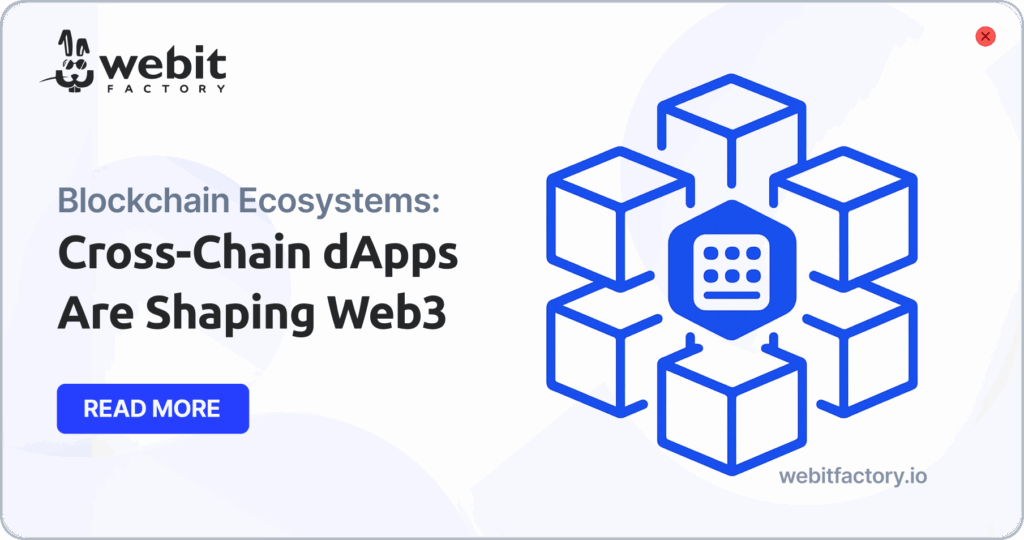Blockchain trends are evolving rapidly, and in 2025, they go far beyond speculation and hype. Businesses and developers alike are watching closely as practical use cases emerge across industries. From zero-knowledge proofs enabling privacy to modular chains optimizing infrastructure, blockchain is steadily becoming foundational to digital innovation. Understanding where these trends are headed is key for staying competitive in a decentralized future.
Why blockchain trends still matter
In 2025, blockchain isn’t a side bet or buzzword, it’s a core part of the tech stack for serious digital projects. Developers aren’t just chasing coins anymore. They’re solving infrastructure problems, designing user-centric experiences, and building tools with real-world utility.
Despite market volatility, blockchain development is accelerating with deeper, infrastructure-focused changes. The shift from theoretical value to practical applications signals that blockchain is entering a mature phase. Web3 experiences are becoming full-stack ecosystems, with improved UX and growing enterprise interest, especially in sectors like logistics, identity, and loyalty.
According to Webisoft, real-world blockchain use cases now span logistics, healthcare, gaming, decentralized identity, and more, illustrating the tech’s expanding role beyond finance.
Blockchain trends are reshaping developer priorities
Scalability used to be a big headache. Now it’s becoming a design decision. Layer 2 platforms have stepped in with real answers, shifting how developers approach everything from gas fees to deployment timelines. If you’re building in 2025, Layer 2s aren’t optional, they’re essential.
Key developments include:
Starknet
Uses zk-rollups to offer high-throughput, low-cost Ethereum transactions
ZKsync
Bundles transactions into cryptographic proofs for privacy and performance
OP Stack & Arbitrum Orbit
Enable tailored Layer 2 chains for specific application needs
These solutions are making Layer 2s the default choice for dApp scalability and customization. As this ecosystem diversifies, developers are being empowered to choose their infrastructure stack strategically, aligning tech capabilities with product goals.
ZK technology is transforming cross-chain systems
ZK tech is no longer experimental, it’s part of the standard toolkit. What used to be bleeding-edge cryptography is now powering real applications that demand secure validation and user privacy. And it’s quietly enabling a new level of interoperability that legacy bridges never quite nailed.
Platforms like ZKsync and Starknet lead this shift by using zk-rollups that maintain data integrity while scaling networks. At the same time, zkVMs enable verifiable off-chain computation and privacy-preserving apps. This technology is also becoming essential for chain-agnostic routing and asset transfers, according to MoldStud. The more seamless and secure these connections become, the more likely blockchain will integrate deeply across industries and use cases.
Tokenized loyalty is becoming a product feature
Loyalty rewards used to be buried in the marketing stack, now they’re productized. Tokenized programs aren’t just perks; they’re part of how users interact with your platform. For businesses, this means rethinking what retention looks like in a token-native world.
Benefits of tokenized loyalty models:
Interoperability
Points can be used across different platforms
Transferability
Users have more control over earned rewards
Integration
Tokens can be embedded into Web3 community features
Transparency
Transactions and rewards are traceable on-chain
Business Insider says Mastercard’s multi-token payment networks exemplify real-world implementation. As Forbes notes, tokenization resolves key issues of flexibility and value that plague legacy loyalty systems. These models are rapidly becoming embedded features in Web3-native products, rather than standalone experiments.
Modular blockchain trends enable flexible architecture
Think of modular blockchains as the microservices of Web3. Instead of wrestling with monolithic chains, developers can now plug together custom components that match their app’s specific needs. This isn’t just a technical upgrade, it’s a mindset shift.
Platforms like Celestia, Optimism, and Arbitrum support the creation of purpose-built chains with composable features. According to Nownodes, this modular approach enhances scalability and adaptability. zkVMs further support this model by enabling secure off-chain computation, making blockchain infrastructure more flexible and future-proof. The growing stackability of blockchain functions, execution layers, DA layers, settlement protocols, marks a shift toward Web3 architecture that mirrors cloud-native software development.
Blockchain in 2025 isn’t waiting for mass adoption, it’s already doing the work. From loyalty systems to cross-chain protocols, these tools are proving their value in production. If you’re building for the future, ignoring these trends isn’t just risky, it’s short-sighted. This is where the real momentum is.
Got a Blockchain Project Idea?
Related Articles

AI Agents Explained in Simple Terms
Discover what AI agents are, how they work, and why intelligent agents are reshaping automation across industries.

AI Solutions for HR That Transform Hiring and Retention
AI solutions for HR are transforming hiring and retention with faster recruitment, better cultural fit, and lower turnover rates.

Cross-Chain dApps Are Shaping Web3
Cross-chain dApps are shaping Web3 by streamlining UX, improving contract monitoring, and bridging fragmented blockchain ecosystems.
